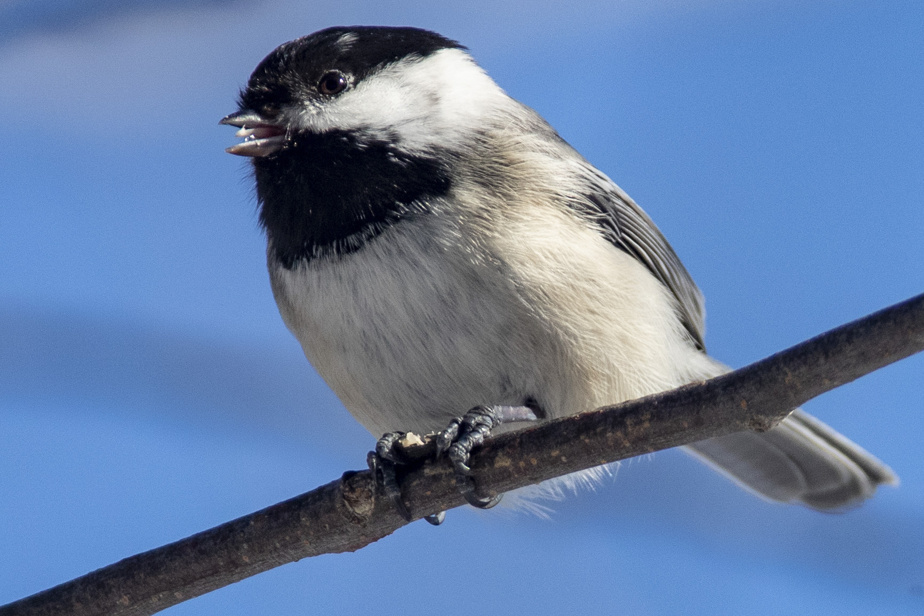There are calls and songs of birds that are easily recognizable: the energetic trill of the red-winged blackbird, the raucous croak of the crow, the tchic-a-di-di-di of the black-capped chickadee. But the other songs? Which bird modulates a delicate melody in the early morning? What funny bird sounds like an old clothesline?
There are applications that can identify birds from their songs, such as Merlin Bird ID, Song Sleuth Bird Song Analyzer, BierNETetc.
“The apps all work pretty much the same way, they compare sonograms, but Merlin Bird ID is by far the best application for identifying bird songs, says the director general of the Regroupement QuébecOiseau, Jean-Sébastien Guénette. In addition, it is linked to eBird: it can let you know which species is most likely to be detected for a given region, for the given period of the year. »
Merlin Bird IDa reference
Most other apps have to compare the song they detect to a full database of songs that are not adjusted for location and time.
The app Merlin Bird ID was developed by the Cornell Lab of Ornithology, a reference in the world of ornithology. As for eBird, it is a large database developed by the Cornell Lab of Ornithology and the National Audubon Society, an example of citizen science.

PHOTO ALAIN ROBERGE, LA PRESSE ARCHIVES
The app Merlin Bird ID also includes drumming recordings of various peaks.
Of course, the application Merlin Bird ID is not perfect, but for budding ornithologists, it is a particularly valuable tool.
“I did some non-scientific analyzes and I arrived at a detectability rate of about 85% compared to what my ear hears, says Mr. Guénette. And from what the application detects, I estimate the identification success at 80-85%. »
He suggests using the app at any nature park and preferably in the morning, before 9:30 a.m. or 10 a.m. Or earlier, if it’s very hot.

PHOTO MARTIN CHAMBERLAND, ARCHIVES LA PRESSE
The great blue heron has a characteristic hoarse croak.
On the test!
I take him at his word. I arrive at Parc Jean-Drapeau a little after 7:30 a.m., carefully avoiding the weekend of the Grand Prix automobile.
The birds have a field day. But by paying attention to what we hear, we realize that even in the middle of a large park, there is a racket: hammer blows and a saw here, a car there, a lawn mower on one side, cyclists chatting on another, an airplane above…
Surprisingly, the application manages to distinguish several birdsongs: a yellow warbler, A american redstart. Whoops ! I haven’t changed the language settings: it only takes me a few seconds to choose French and thus get a yellow warbler and a redstart.
There are other birds that take part in the concert, such as a northern cardinal, a red-eyed vireo and a song sparrow.
The app highlights the name and photo of the bird that just sings, and I quickly learn to tell the difference between the various songs. The application offers samples, which makes it possible to refine the listening.
But now, I still don’t see the little feathered singers in the woods of Île Sainte-Hélène. I move discreetly along uncrowded paths (in other words, I get caught in the face of the spider’s threads stretched from one side of the path to the other).
I hear another song, a sort of peepee that goes down and up. The application tells me that it is the eastern pewee. Yes.
Finally, I see a small yellow flash in the trees. Ah, there he is again, a little yellow bird. I use Merlin Bird ID to identify it. The application asks me three small questions: the size of the bird (small), its dominant color or colors (yellow), the environment where it is (in a tree). And presto, the application gives me two possibilities, starting with the yellow warbler. This confirms the identification by song.
I keep listening, focusing on the differences between the Yellow Warbler and the American Redstart. So much so that I barely hear the ring-billed gull’s cry and that of the crow: the application does not miss them.

PHOTO MARTIN CHAMBERLAND, ARCHIVES LA PRESSE
The red-winged blackbird is very, very vocal.
I move to the edge of the water to try to hear new birds. Indeed, the red-winged blackbird takes up all the space, as visible as it is audible. The app alerts me to a least bittern (a cousin of the heron), but I can’t detect it.
I only see a groundhog, very friendly but not very singing.
The morning is progressing, the birds will be more discreet, it’s time to pack up.
Ah yes, for the curious: the bird that sounds like a clothesline is the blue jay!
